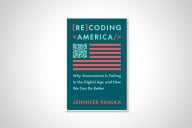You have /5 articles left.
Sign up for a free account or log in.
Robert Kelchen’s piece on the challenges in assessing occupational outcomes for students in online programs at places that offer both online and on-site programs is well worth the read. Kelchen notes, correctly, that many institutions offer both on-site and online versions of the same program, and that the graduates’ results are lumped together in the federal data. The absence of accurate numbers makes it hard to say whether the government should treat the formats interchangeably or whether it should favor one over the other.
It’s true, but I’d add another variable—many students mix and match formats.
At my college, for instance, the vast majority of online students are also taking on-site courses. Typically, they’ll front-load the in-person classes to the first few days of the week, or the first few hours of the day, so they’ll have large and predictable blocks of time in which to work for pay. A student who takes, say, three in-person classes and one or two online classes can work the online classes around shifts. The student still has a connection to campus but is better able to juggle multiple obligations and still finish on time.
Prior to COVID, we found that students who were entirely or almost entirely in person for their first semester could start weaving in some online sections in subsequent semesters without endangering their likelihood of finishing. But students who started entirely online were much less likely to complete. That’s one reason we’ve been wary of moving developmental classes online.
Students have told us with their feet that they prefer many STEM classes to be in person, but they’re okay with many social science classes being online. They like in-person labs, and many seem to be self-aware enough about their experience with math to know that they’ll benefit from having a live professor to answer to. But many students who insist that math has to be in person are perfectly fine with sociology being online. The lack of specialized equipment and notation presumably factor into their preference.
The last two years have been outliers, thanks to a colossal intervening variable. And we’ve introduced a new modality, the synchronous online class, which already shows promise in some areas. But the underlying point remains that students mix the categories according to their own needs.
I’d love to see large-scale data looking at the most effective ways to mix and match formats, especially if the data could be disaggregated by student demographics. Is student age relevant? Do students who have children themselves perform differently than students who don’t? Are there ways to advise students to mix formats that will actually reduce the gaps between white students and students of color?
I don’t mean to dump all of this on Kelchen. He’s asking questions of the federal data set; I am, too. A data set that reflects the nonbinary nature of student schedules could tell us a lot. Here’s hoping …



